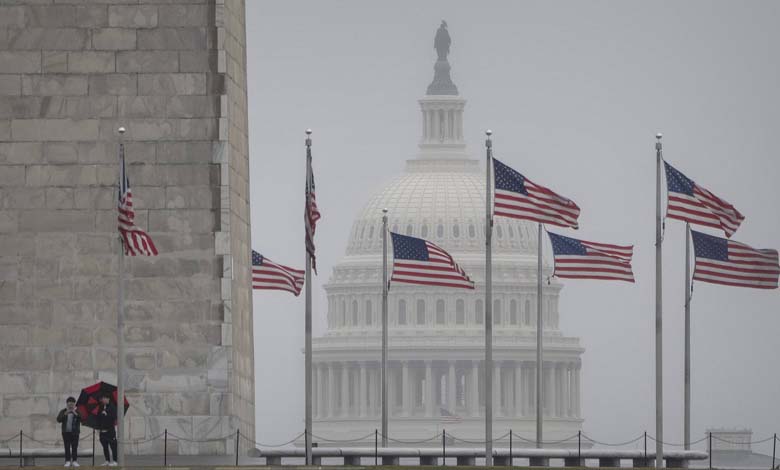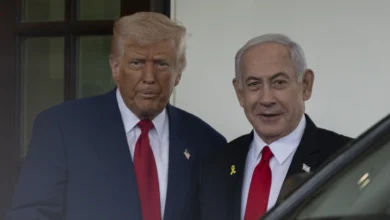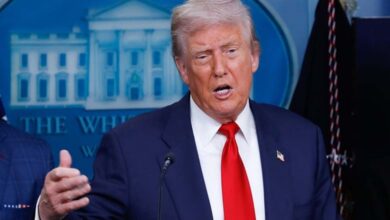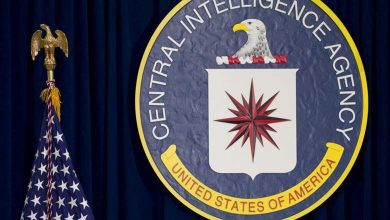8 Facts Explaining the History of the “State of the Union” Address in the United States

It is not just a presidential event but a historic tradition with deep roots, having undergone significant transformations over time—from written messages to televised speeches addressing millions. This is the State of the Union Address in America.
More than a month after his inauguration, President Donald Trump is set to deliver his first address before Congress today, Tuesday, at 9:00 PM (02:00 GMT Wednesday) since returning to the White House.
-
Europe’s Decisive Test: 10 Steps to Navigate without the American Captain
-
Musk’s Authority Raises Americans’ Concerns of a State within a State
Before members of the House of Representatives and the Senate, Trump is expected to present the measures he has taken during his first 44 days in office, as well as those he plans to implement during the remainder of his term.
The State of the Union Address is a tradition deeply rooted in the U.S. Constitution. Article II, Section 3 states:
“The President shall from time to time give to the Congress Information on the State of the Union, and recommend to their Consideration such Measures as he shall judge necessary and expedient.”
-
NGAD: The American Sixth-Generation Fighter between Domination and Financial Drain
-
2025… How Do Americans View the New Year?
Although the Constitution does not explicitly define what “from time to time” means, presidents have traditionally delivered this message once a year.
Until 1934, the State of the Union message was typically delivered in December rather than in January or February.
In 2022, Joe Biden became the first president to deliver the State of the Union Address in March.
Below are eight key facts, based on reports from American media outlets, including PBS and the Associated Press, that highlight how the State of the Union Address has evolved over the decades and the major milestones that have shaped this annual event.
-
Can Biden Succeed in Stopping the Gaza War? An American Newspaper Responds
-
Blinken’s Call: Is Sudan climbing the Swiss Mountains under American pressure?
Who Delivered the First State of the Union Address?
George Washington, on January 8, 1790, in New York.
Does It Have to Be a Speech?
No. In his first address on December 8, 1801, Thomas Jefferson sent written copies to both chambers of Congress, to be read by congressional staff.
Jefferson aimed to simplify what he viewed as an aristocratic tradition reminiscent of the British king’s speech from the throne, which he deemed inappropriate for a republic.
For over a century, presidents continued the practice of submitting written messages to Congress.
-
Warning of a “Terrorist Attack”: State of Alert in American Bases in Europe
-
Congress rejects resolution restricting support for Israel
On April 8, 1913, Woodrow Wilson revived the tradition of delivering the annual address in person. He is also credited with transforming the speech from a mere report on executive activities into a blueprint for the president’s legislative agenda for the year.
When Did It Become Known as the “State of the Union Address”?
Franklin D. Roosevelt applied the constitutional phrase “State of the Union” to both the message and the event, and the term has remained in common usage ever since.
How Has Technology Impacted the Address?
Calvin Coolidge delivered the first State of the Union Address broadcast on radio in 1923.
-
Congress votes on project to rescue the United States from Federal Shutdown
-
U.S. Congress considers designating the Houthi militia a Terrorist Organization
Harry Truman’s 1947 address was the first to be televised.
Recognizing the importance of a national audience, Lyndon Johnson moved the speech from midday to 9:00 PM in 1965 to attract the largest possible television audience.
George W. Bush’s 2002 address was the first to be streamed live on the White House website.
Is There a State of the Union Address Every Year?
No. The following presidents did not deliver a formal State of the Union Address during their first year in office:
-
The Writers of the “State of the Union” Address… A Grueling Task for the President’s “Mirror”
-
The Muslim Brotherhood in the U.S. Under Pressure… What’s Happening?
- Ronald Reagan (1981)
- George H.W. Bush (1989)
- Bill Clinton (1993)
- George W. Bush (2001)
- Barack Obama (2009)
- Donald Trump (2017)
- Joe Biden (2021)
Instead, these presidents delivered major speeches to Congress shortly after their inaugurations.
-
Why Will Conspiracy Theories About the “CIA” Not Disappear?
-
The Pentagon is “powerless” against mysterious drones… Unchecked intrusions over a U.S. base
Has the Speech Always Been Delivered in Person Since Wilson Revived the Practice?
No. Truman submitted his final message in written form, as did Eisenhower in 1961 and Carter in 1981.
When Eisenhower was recovering from a heart attack in 1956, he recorded a seven-minute summary of his address from his home in Key West, Florida, which was broadcast nationwide.
Richard Nixon submitted a written message in 1973, with his staff explaining that an oral address would have been too close to his second inaugural speech.
-
Gaps and Ambiguities: ‘Black Holes’ in Harris’ Political Agenda
-
Iranian Proxies Focus on Targeting U.S. Bases in Syria
Which Presidents Did Not Deliver a State of the Union Message?
William Henry Harrison, who died 32 days after his inauguration in 1841, and James A. Garfield, who was assassinated in 1881 after serving only 199 days.
The Longest and Shortest Addresses
Some presidents keep their State of the Union speeches brief, while others extend them significantly.
George Washington holds the record for the shortest address, using only 1,089 words in 1790—slightly longer than a typical newspaper editorial.
-
The Untold Story: How Nancy Pelosi Forced Biden to Withdraw
-
FBI Settles the Debate: Was It a Bullet or Shrapnel That Injured Trump’s Ear?
Since the beginning of recorded speeches, Richard Nixon holds the record for the shortest spoken address, with his 1972 speech lasting less than 29 minutes.
Jimmy Carter holds the record for the longest State of the Union message, submitting a written address to Congress in 1981 that contained 33,667 words. This was the last time a president delivered the address exclusively in written form.
Bill Clinton holds the record for the longest spoken State of the Union Address, lasting one hour and twenty-eight minutes in 2000.












